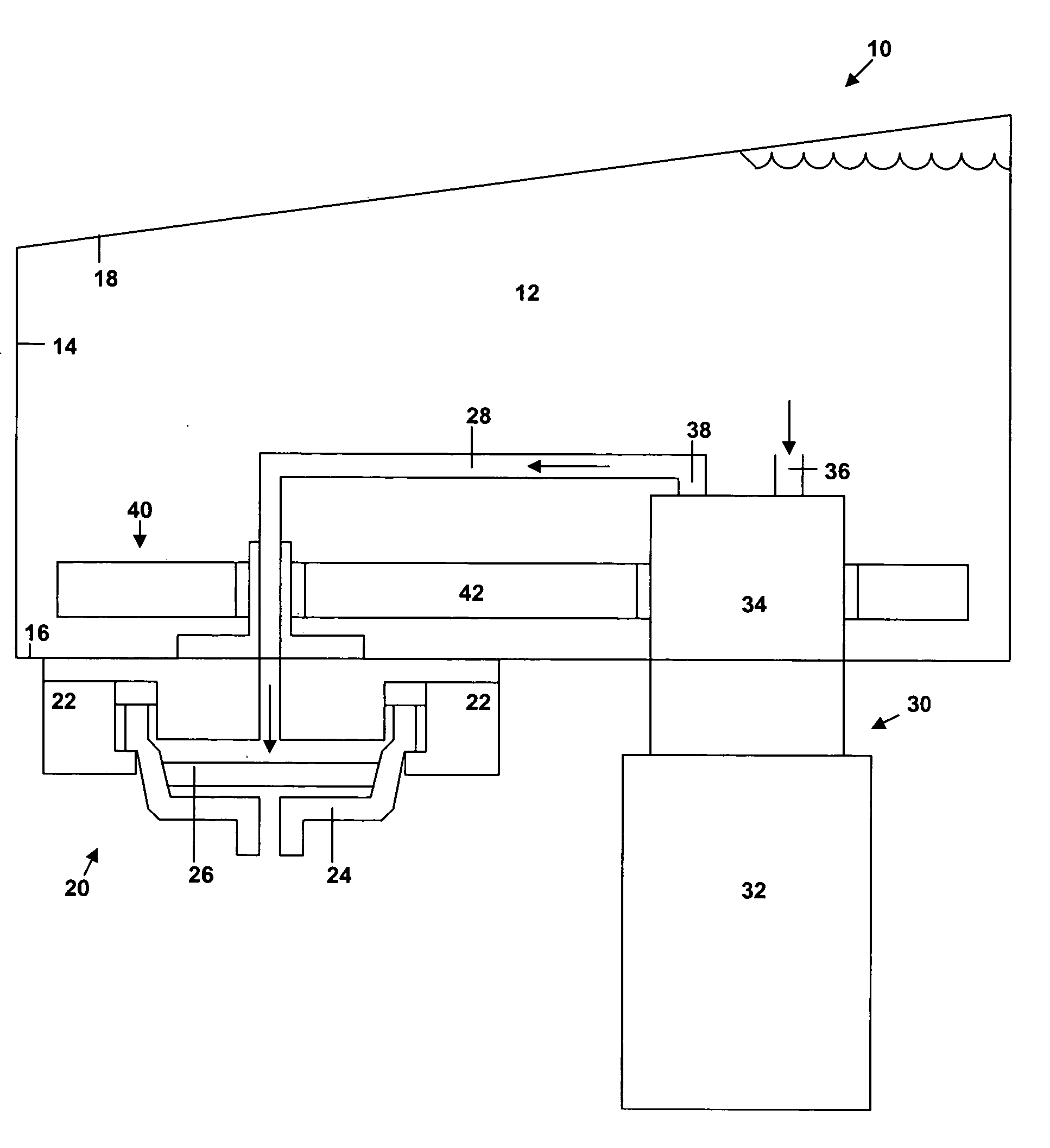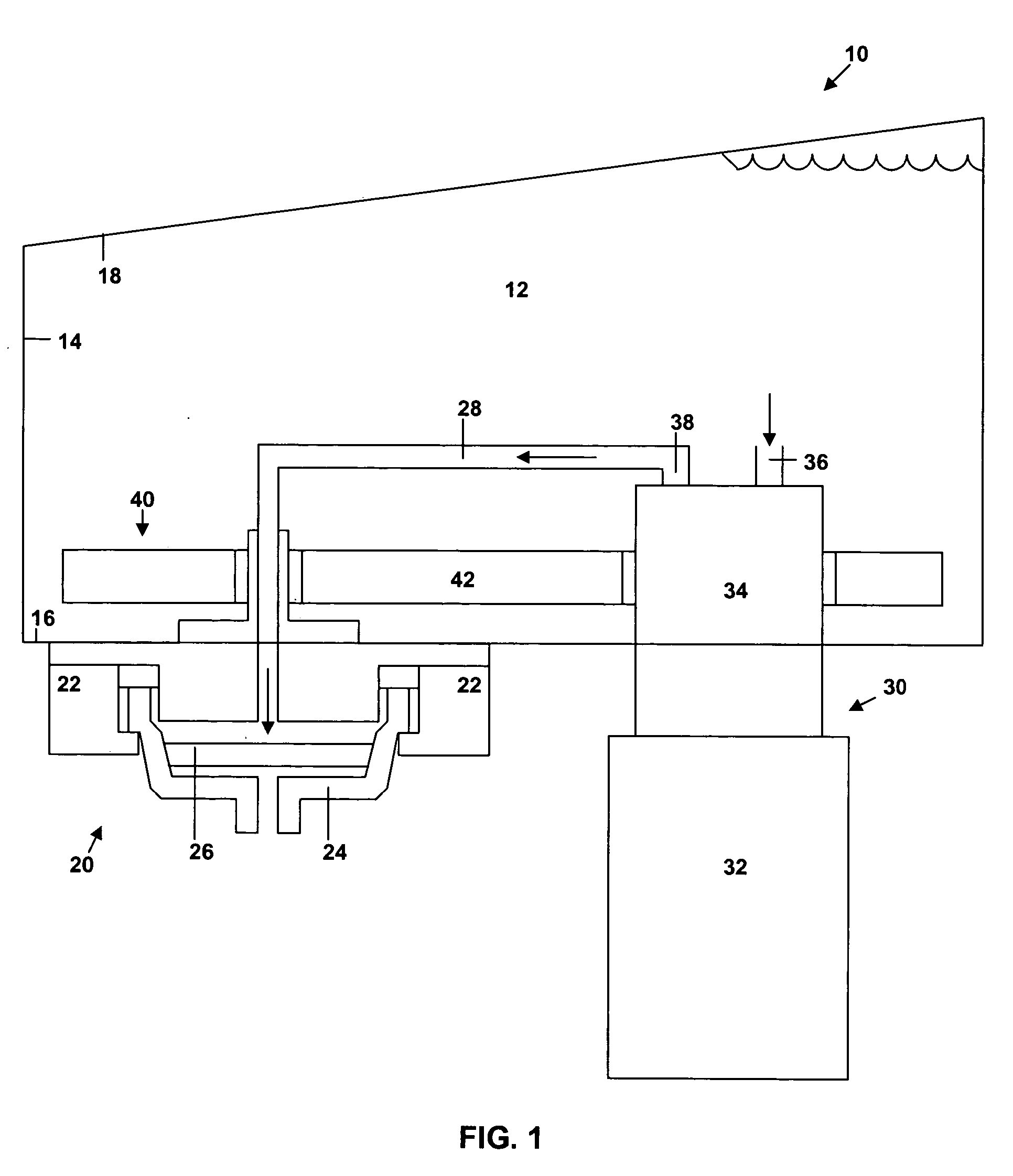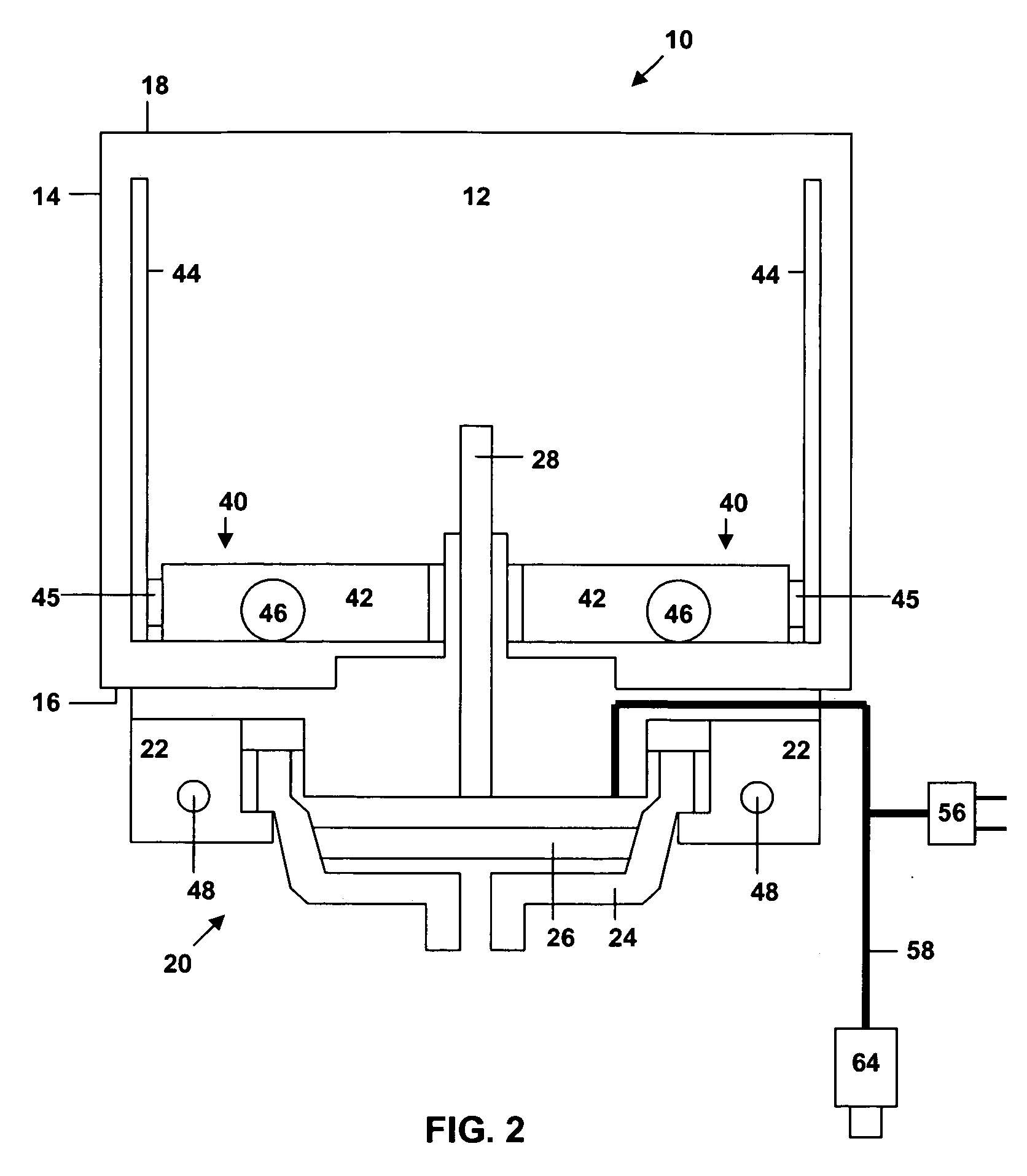Espresso machine and method of use thereof
a technology of espresso machine and portafilter, which is applied in the field of espresso machine, can solve the problems of affecting the flavor and experience of espresso, challenging the present equipment, and affecting the flavor of the drink, so as to minimize the temperature loss of brew water as it passes through the ground coffee in the portafilter, and the effect of reducing the temperature loss of brew water
- Summary
- Abstract
- Description
- Claims
- Application Information
AI Technical Summary
Benefits of technology
Problems solved by technology
Method used
Image
Examples
Embodiment Construction
[0023] Although the apparatus described herein is described and shown in the figures with reference to an espresso machine, it should be noted that the various temperature and pressure control aspects of the invention described herein are applicable to other types of brewed beverages machines. For example, the temperature, pressure, and brew time controls described below are applicable to single serving coffee making apparatus and single serving tea making apparatus.
[0024] An espresso machine 10 in accordance with the present invention is shown in a side cross sectional view in FIG. 1. The espresso machine 10 has a brew water tank 12 which preferably has four sides 14 and a bottom 16 fabricated of stainless steel which provides adequate insulation and excellent resistance to corrosion. Corrosion can taint the flavor of espresso. Typically, the top 18 of the brew water tank 12 is fabricated from copper because of copper's excellent thermal transmission properties. The insulating pro...
PUM
 Login to View More
Login to View More Abstract
Description
Claims
Application Information
 Login to View More
Login to View More - R&D
- Intellectual Property
- Life Sciences
- Materials
- Tech Scout
- Unparalleled Data Quality
- Higher Quality Content
- 60% Fewer Hallucinations
Browse by: Latest US Patents, China's latest patents, Technical Efficacy Thesaurus, Application Domain, Technology Topic, Popular Technical Reports.
© 2025 PatSnap. All rights reserved.Legal|Privacy policy|Modern Slavery Act Transparency Statement|Sitemap|About US| Contact US: help@patsnap.com



